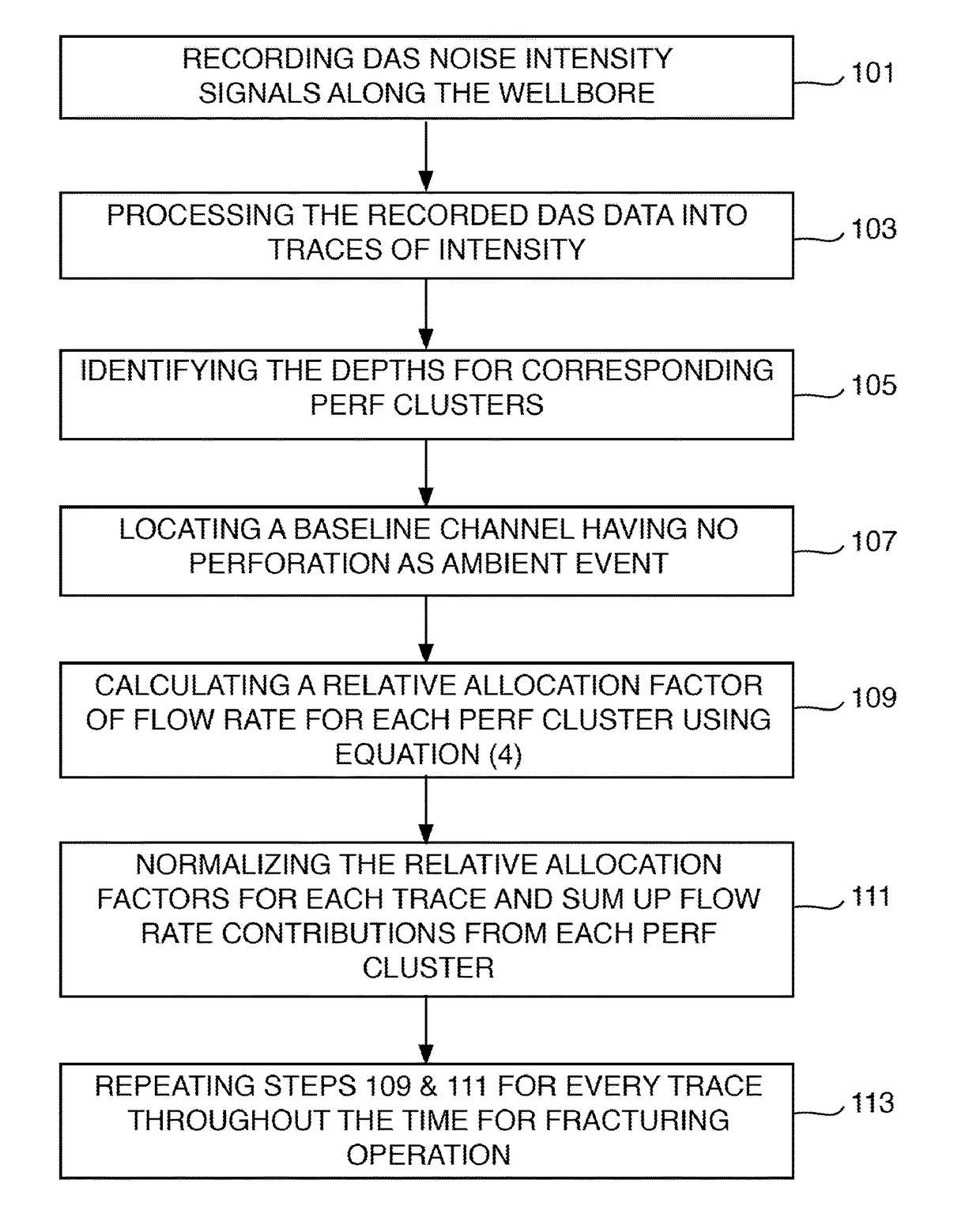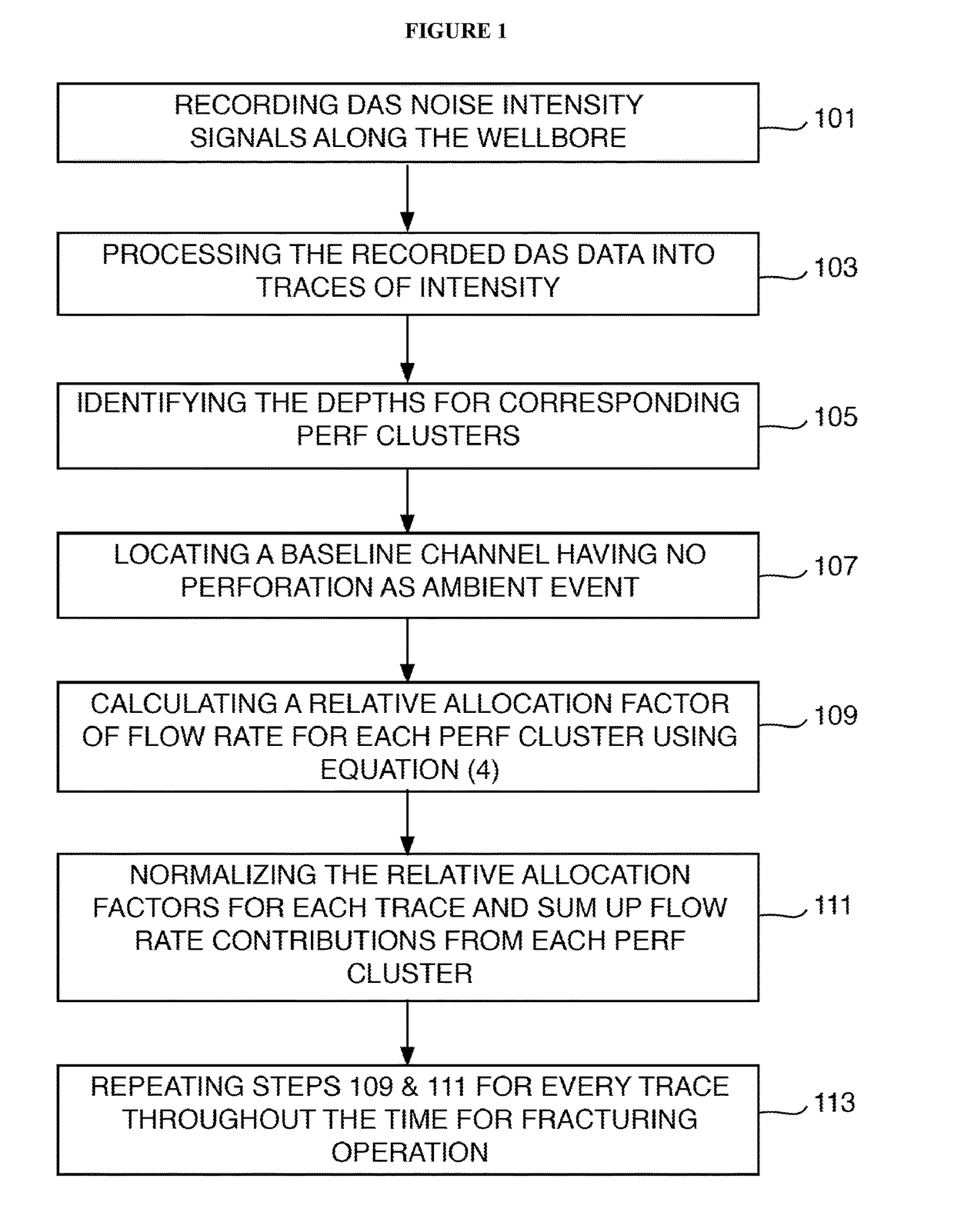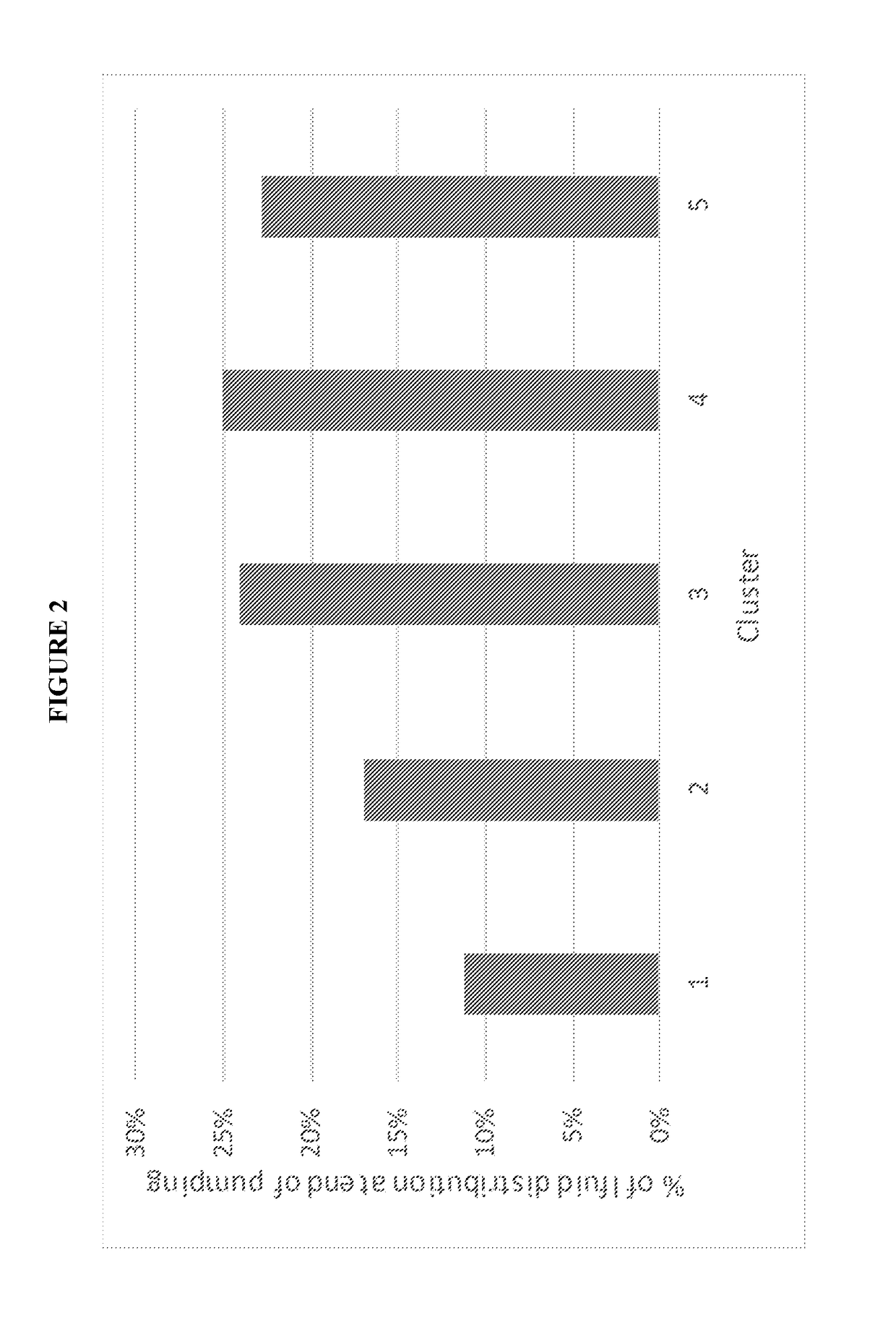Das method of estimating fluid distribution
a fluid distribution and distribution method technology, applied in the field of distributed fiber optic sensing, can solve problems such as completion costs, and achieve the effect of facilitating optimization of completion design
- Summary
- Abstract
- Description
- Claims
- Application Information
AI Technical Summary
Benefits of technology
Problems solved by technology
Method used
Image
Examples
Embodiment Construction
[0084]Turning now to the detailed description of one or more preferred arrangements of the present invention, it should be understood that the inventive features and concepts may be manifested in other arrangements and that the scope of the invention is not limited to the embodiments described or illustrated. The scope of the invention is intended only to be limited by the scope of the claims that follow.
[0085]The DAS technology is briefly explained herein. Through Rayleigh scattering, light transmitted down the cable will continuously backscatter light so that it can be sensed, preferably at the interrogating unit (IU). As light in an optical fiber travels at a speed of approximately 0.2 m / ns, a 10-ns pulse of light occupies about 2 m in the fiber as it propagates. In theory, each 10 nanoseconds of time in the optical echo response can be associated with reflections coming from a 1-m portion of the fiber (two-way time of 10 ns). By generating a repeated pulse every 100 μs and conti...
PUM
| Property | Measurement | Unit |
|---|---|---|
| noise intensity | aaaaa | aaaaa |
| depth | aaaaa | aaaaa |
| volumetric flow rate | aaaaa | aaaaa |
Abstract
Description
Claims
Application Information
 Login to View More
Login to View More - R&D
- Intellectual Property
- Life Sciences
- Materials
- Tech Scout
- Unparalleled Data Quality
- Higher Quality Content
- 60% Fewer Hallucinations
Browse by: Latest US Patents, China's latest patents, Technical Efficacy Thesaurus, Application Domain, Technology Topic, Popular Technical Reports.
© 2025 PatSnap. All rights reserved.Legal|Privacy policy|Modern Slavery Act Transparency Statement|Sitemap|About US| Contact US: help@patsnap.com



